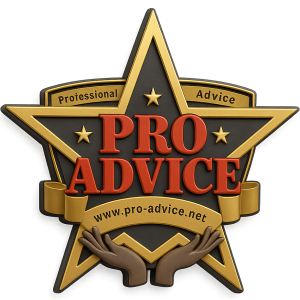
Branding is the heart and soul of any successful business. It’s more than just a logo or a catchy slogan; it’s the entire experience your customers have with your company. A strong brand creates a unique identity, builds customer loyalty, and sets you apart from the competition. In this article, we’ll explore the importance of company branding and provide you with resources and tips to develop your own branding free of charge.
1. What is Branding and Why is it Important?
Branding encompasses the visual, emotional, and communicative elements that define your company. It includes your logo, color scheme, typography, messaging, and customer service. Effective branding can:
Enhance Recognition: A consistent and well-designed brand makes your business easily recognizable.
Build Trust: Professional branding creates a sense of trust and credibility among customers.
Create Loyalty: Strong branding fosters an emotional connection with customers, encouraging repeat business.
Differentiate from Competitors: A unique brand identity helps you stand out in a crowded market.
Support Marketing Efforts: Consistent branding enhances the effectiveness of your marketing campaigns.
2. Defining Your Brand Identity
Before you start designing your brand elements, it’s crucial to define your brand identity. Ask yourself the following questions:
What are the core values and mission of my company?
Who is my target audience?
What message do I want my brand to convey?
What are the key attributes of my brand (e.g., modern, traditional, playful, serious)?
3. Creating a Brand Strategy
A well-thought-out brand strategy will guide your branding efforts and ensure consistency. Here are the key components:
a. Brand Vision and Mission
Define your long-term vision and the mission of your company. This will provide direction and purpose to your branding efforts.
b. Target Audience
Identify your target audience. Understanding their needs, preferences, and behaviors will help you tailor your brand to resonate with them.
c. Unique Selling Proposition (USP)
Determine what makes your company unique and why customers should choose you over competitors. Your USP should be reflected in your branding.
4. Developing Visual Brand Elements
a. Logo Design
Your logo is the cornerstone of your brand identity. Use free tools like Canva, LogoMakr, and Hatchful to create a professional logo.
b. Color Palette
Choose a color palette that reflects your brand’s personality and appeals to your target audience. Use tools like Coolors and Adobe Color to create a cohesive color scheme.
c. Typography
Select fonts that align with your brand’s identity. Google Fonts offers a wide range of free fonts for commercial use.
5. Crafting Your Brand Voice and Messaging
Your brand voice and messaging are how you communicate with your audience. Consistency in tone and language is key. Here are some tips:
a. Define Your Tone
Decide whether your brand voice is formal, casual, friendly, authoritative, etc. This should align with your target audience and brand personality.
b. Create Key Messages
Develop core messages that convey your brand’s values, mission, and USP. Use these messages consistently across all marketing materials.
6. Utilizing Free Branding Resources
There are numerous free resources available to help you develop your branding. Here are some of the best:
a. Canva
Canva offers templates for social media posts, business cards, presentations, and more. It’s an excellent tool for creating cohesive branding materials.
b. Unsplash and Pexels
These websites provide high-quality, royalty-free images that you can use in your marketing materials.
c. Google Fonts
Google Fonts offers a wide range of free fonts that you can use to maintain consistent typography in your branding.
d. Coolors
Coolors is a color scheme generator that helps you create a cohesive and appealing color palette for your brand.
7. Implementing Your Brand Across All Channels
Consistency is key in branding. Ensure that your brand elements are consistently applied across all platforms and touchpoints:
a. Website
Your website is often the first point of contact with potential customers. Ensure it reflects your brand’s identity, using your logo, color scheme, and typography consistently.
b. Social Media
Maintain consistency in your social media profiles by using branded graphics, posting with a consistent voice, and adhering to your brand’s visual identity.
c. Marketing Materials
All marketing materials, including business cards, brochures, and advertisements, should reflect your brand identity.
8. Building and Maintaining Brand Awareness
Once your branding is in place, it’s essential to build and maintain brand awareness:
a. Content Marketing
Create valuable and relevant content that resonates with your audience. This can include blog posts, videos, and social media updates.
b. Networking and Partnerships
Engage with your community, attend industry events, and form partnerships to increase your brand’s visibility.
c. Customer Engagement
Interact with your customers through social media, email marketing, and excellent customer service. Encourage reviews and testimonials to build trust.
9. Monitoring and Evolving Your Brand
Branding is not a one-time task. It’s important to continuously monitor and evolve your brand to stay relevant:
a. Gather Feedback
Regularly seek feedback from your customers and employees to understand how your brand is perceived.
b. Analyze Performance
Use analytics tools to measure the effectiveness of your branding efforts. Adjust your strategy based on data and insights.
c. Stay Updated
Keep an eye on industry trends and adapt your branding to stay current and competitive.
Building a strong brand is essential for the success of any business. By defining your brand identity, creating a consistent visual and verbal identity, and utilizing free resources, you can develop a compelling brand without breaking the bank. Remember, consistency and authenticity are key to effective branding. With these tips and resources, you’re well on your way to creating a brand that resonates with your audience and stands the test of time.



